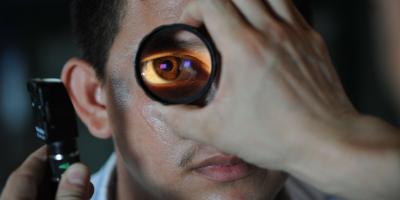Melanoma can happen to anyone. Poles, due to their pale complexion, are prone to this type of cancer. However, the resection of melanoma early enough makes it possible to heal up to 80% of patients.
Melanoma is a malignant skin neoplasm, which most often presents itself on the skin, but also in the area of the lips, nose or the eyeball.
According to the information provided by the Melanoma Academy, the scientific unit of the Polish Society of Surgical Oncology, each year in Poland there are approx. 50 thousand cases of newly diagnosed skin neoplasms, of which approx. 2.5-3 thousand are melanomas. Each year 1.1 thousand patients suffering from this type of cancer die.
Self-examination is the key
Melanomas are neoplasms which are the easiest to diagnose, as they develop on the surface of the skin. The experts from the Melanoma Academy recommend: “Everyone looks in the mirror every day, so it is worth paying attention to any suspiciously looking lesions on your body."
“Everyone should know what kind of marks they have on their skin, and this is possible through self-examination," emphasises Professor Piotr Rutkowski, head of the Clinic of Soft Tissue and Bone Neoplasms and Melanomas at the Maria Skłodowska-Curie Institute of Oncology in Warsaw and President of the Scientific Council of the Melanoma Academy.
The Professor also reminds us that no referral is needed for an oncologist surgeon or dermatologist.
The ABCDEs of melanoma
Melanomas have several characteristic features which make diagnosis easier. These are defined using the ABCDE criteria (Asymmetry, Border, Colour, Dimension and Evolution):
A – asymmetry, e.g. a mark with one half with a different shape than the other;
B – irregular, uneven and coarse edges;
C – red or black, uneven colour;
D – large dimensions above 0.5 cm;
E – evolution, i.e. progressing changes to the mark.
All the marks with the above mentioned characteristic features should be inspected by a dermatologist or oncologist surgeon; in the case of any doubts, the mark should be resected. The examination is quick, painless and non-invasive.
Poles within the risk group for melanoma
Specific features of appearance constitute factors conducive to melanoma. The risk is the highest in the case of people:
- with fair and red hair;
- with light-coloured eyes;
- with pale or very pale complexion;
- with freckles and/or marks;
- who get sunburnt easily;
- who have little tolerance for sunlight;
- who never get tanned or only after a long time in the sun.
“Approx. 25% of people in Poland have pale or very pale complexion which gets sunburnt easily. Including people with pale complexion, which, however, gets tanned more easily and is more resistant to sunburns, approx. 65% of Poland’s population falls within the group with a high risk of melanoma," Professor Rutkowski emphasises.
How to guard yourself against melanoma?
The experts from the Melanoma Academy point to the golden rules which help decrease the risk of skin cancer:
- avoid sunlight between 11 a.m. and 4 p.m.;
- do not go to solariums – this is particularly dangerous for young people;
- examine your skin carefully once a month – check whether the marks have changed or whether new ones appeared;
- see a dermatologist or oncologist surgeon at least once a year;
- if you plan on sunbathing, remember to use UV filters, wear a hat and sunglasses;
- be careful with the sunlight in May; overexposure to the first, strong sunbeams can end in skin burns, which contribute to the development of melanoma.
More information: www.akademiaczerniaka.pl.









Comments (0)